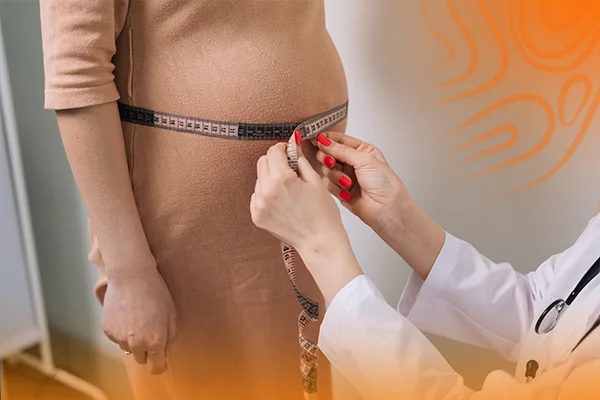Is Belt Lipectomy in Dubai the Right Choice for You? Costs, Recovery & Benefits Explained
Considering a belt lipectomy in Dubai? This body-contouring surgery removes excess skin and fat around the waistline, often after significant weight loss or pregnancy. It enhances body shape, boosts confidence, and improves mobility. Recovery takes about 4-6 weeks, requiring proper post-op care.
While it offers transformative results, risks include scarring, infection, and healing complications. Costs vary based on surgeon expertise and clinic facilities, with limited insurance coverage. Consulting a board-certified plastic surgeon ensures the best outcomes. Ready for a toned silhouette? Explore whether belt lipectomy is your ideal solution!
Belt lipectomy, also known as circumferential abdominoplasty, is a surgical procedure aimed at removing excess skin and fat from the midsection of the body. This procedure is becoming increasingly popular as more people opt for post-weight loss surgery. It can help people who have lost a significant amount of weight, or women who have given birth and are struggling to get their pre-baby body back.
Despite its popularity, many people still have questions about the procedure, such as what it involves, the risks involved, and the recovery process. In this blog post, we will cover everything you need to know about belt lipectomy, from the procedure itself and the qualifications of a good candidate to the potential risks and benefits and tips for a successful recovery.
Introduction to Belt Lipectomy

Belt lipectomy, also known as a lower body lift, is a surgical procedure designed to address excess skin and tissue around the midsection of the body. This comprehensive surgical technique targets multiple areas, including the abdomen, lower back, buttocks, and hips, resulting in a more contoured and toned appearance.
During the procedure, excess skin and fat are removed, and the underlying tissues are tightened to create a smoother and more defined silhouette. This surgery is often recommended for individuals who have experienced significant weight loss or pregnancy and are left with loose, sagging skin that diet and exercise alone cannot address.
By understanding the intricacies of belt lipectomy and how it can transform the body, individuals considering this procedure can make informed decisions about their cosmetic goals. From its benefits to the recovery process, delving into the details of this surgery can provide valuable insights for those seeking to enhance their body contours and achieve a more rejuvenated appearance.
You might also like: Effective ways to get a flat stomach: Full guide to make your stomach flat
Who is a Candidate for Belt Lipectomy Surgery?
Belt lipectomy, also known as lower body lift surgery, is a comprehensive procedure that targets excess skin and fat around the waistline. This surgery is often sought by individuals who have experienced significant weight loss, either through bariatric surgery or lifestyle changes, and are left with loose, hanging skin that can be both physically uncomfortable and aesthetically displeasing.
Candidates for this surgery typically include individuals who are in good overall health, have maintained a stable weight for at least six months, and have realistic expectations about the outcomes of the procedure. Ideal candidates are non-smokers or willing to quit smoking before and after surgery to promote proper healing.
Additionally, candidates for belt lipectomy should have excess skin and tissue around the abdomen, hips, and lower back that cannot be effectively addressed through diet and exercise alone. This procedure is not a substitute for weight loss or a solution for obesity but rather a way to contour the body and achieve a smoother, more toned appearance.
It is important for individuals considering this surgery to consult with a board-certified plastic surgeon to determine if they are a suitable candidate and to discuss the potential risks and benefits associated with the procedure. By understanding who is a candidate for belt lipectomy surgery, individuals can make informed decisions about their body contouring goals and take steps towards achieving the results they desire.
Benefits and Risks of Belt Lipectomy

This transformative procedure offers a range of benefits for individuals seeking to achieve a more toned and sculpted appearance.
Related article: Best Ways to Lose belly fat
One of the primary benefits of a belt lipectomy is the dramatic improvement in body contour and silhouette. By eliminating sagging skin and stubborn fat deposits, patients can achieve a smoother, firmer appearance that enhances their overall body shape.
In addition to the aesthetic benefits, belt lipectomy can also improve comfort and mobility for patients. Excess skin and fat in the abdominal area can cause physical discomfort, skin irritation, and limitations in movement. By removing these excess tissues, patients can experience a greater range of motion, improved posture, and enhanced comfort in daily activities.
Beside aesthetic beauty, this procedure if done properly can have a positive impact on the confidence level of each individual.
While belt lipectomy offers numerous advantages, it is essential to consider the potential risks and complications associated with any surgical procedure. Some risks of belt lipectomy include infection, bleeding, poor wound healing, scarring, asymmetry, and changes in sensation. It is important for patients to discuss these risks with their plastic surgeon and follow post-operative care instructions diligently to minimize the likelihood of complications.
Overall, the benefits of this treatment can be transformative for individuals seeking to enhance their body contour and achieve their desired aesthetic goals. By weighing the potential benefits against the risks and considering personal factors, patients can make an informed decision about whether belt lipectomy is the right choice for them.
Preparing for Belt Lipectomy Surgery: What to Expect
Preparing for belt lipectomy surgery is a crucial step in ensuring a successful outcome and smooth recovery. Before undergoing this transformative procedure, it’s important to have a clear understanding of what to expect during the preparation phase.
First and foremost, you will have a consultation with your plastic surgeon to discuss your goals, medical history, and any concerns you may have. During this consultation, your surgeon will evaluate your overall health to determine if you are a suitable candidate for the procedure.
In the weeks leading up to your belt lipectomy surgery, your surgeon may recommend certain pre-operative preparations such as quitting smoking, adjusting medications, and following a healthy diet and exercise regimen. These steps are essential in optimizing your body for surgery and promoting faster healing.
Additionally, you will receive specific instructions on how to prepare for the day of surgery, including guidelines on fasting, medications to avoid, and what to wear. It’s important to follow these instructions closely to ensure a safe and successful procedure.

The Belt Lipectomy Procedure: Step-by-Step Overview
Once you have made the decision to undergo a belt lipectomy, it is crucial to understand the procedure and what to expect. The belt lipectomy procedure typically involves several key steps that are aimed at achieving a tighter, more contoured midsection.
Anesthesia
The procedure begins with the administration of anesthesia to ensure the patient is comfortable and pain-free throughout the surgery. The type of anesthesia used will depend on the extent of the surgery and the patient’s medical history.
Incision
A circumferential incision is made around the waistline, extending across the lower abdomen and back. This incision allows the surgeon to remove excess skin and fat from the entire midsection.
elegant hoopoe is the number one skin tightening center in Dubai and you can check out the prices and the results of each type of procedure we have had in here.
Tissue Removal
Once the incision is made, the surgeon will carefully remove excess skin and fat tissue from the abdomen, flanks, and lower back. This step is crucial in achieving a smoother and more toned appearance.
Muscle Tightening
In some cases, the underlying abdominal muscles may be tightened to further enhance the contour of the midsection. This step helps create a firmer and more defined waistline.
Skin Redraping
After excess tissue is removed and muscles are tightened, the remaining skin is redraped over the abdominal area and sutured into place. This ensures a smooth and natural-looking result.
Closure
The incisions are closed with sutures, and dressings or compression garments may be applied to support the healing process and reduce swelling.
By understanding the step-by-step overview of the belt lipectomy procedure, patients can be better prepared for what to expect during and after surgery. It is essential to consult with a board-certified plastic surgeon to discuss the specific details of the procedure and determine if it is the right option for achieving your aesthetic goals.
Recovery Process after Belt Lipectomy Surgery
After undergoing a belt lipectomy surgery, the recovery process is a crucial phase that requires proper attention and care. Patients should expect some discomfort, swelling, and bruising in the treated areas initially. It is important to follow your surgeon’s post-operative instructions diligently to ensure a smooth and successful recovery.
During the initial days post-surgery, rest and limited movement are recommended to allow the body to heal. Pain medication prescribed by your surgeon can help manage any discomfort. It is essential to avoid strenuous activities and lifting heavy objects during the initial recovery period to prevent complications.
Proper wound care is also essential to minimize the risk of infection and promote optimal healing. Your surgeon will provide instructions on how to care for the incision sites and when to schedule follow-up appointments for monitoring progress.
As the recovery progresses, patients may gradually resume light activities and incorporate gentle exercises to promote circulation and prevent stiffness. A healthy diet rich in nutrients can also aid in the healing process and promote overall well-being.
It is important to be patient during the recovery period and listen to your body’s signals. If you experience any unusual symptoms or have concerns about your recovery, do not hesitate to contact your surgeon for guidance and support. With proper care and attention, patients can expect to see gradual improvement in their condition and enjoy the benefits of a smoother, more contoured body contour.
Potential Complications and How to Minimize Risks
When considering a belt lipectomy, it’s crucial to be aware of the potential complications that may arise during or after the procedure. While this surgery can deliver transformative results, like any surgical procedure, there are inherent risks involved. Some possible complications include infection, blood clots, excessive bleeding, poor wound healing, changes in skin sensation, and scarring.
To minimize these risks, it’s essential to choose a board-certified plastic surgeon with extensive experience in performing belt lipectomies. A skilled surgeon will conduct a thorough evaluation of your health history and current medical conditions to ensure you are a suitable candidate for the surgery. Follow all pre-operative and post-operative instructions provided by your surgeon diligently, including proper wound care, medication management, and activity restrictions.
Maintaining a healthy lifestyle both before and after the surgery can also help reduce the risk of complications. This includes eating a balanced diet, staying hydrated, engaging in regular physical activity, and avoiding smoking and excessive alcohol consumption. By taking these precautions and closely following your surgeon’s guidance, you can help minimize potential complications and achieve optimal results from your belt lipectomy procedure.
Results and Expected Outcomes of Belt Lipectomy

Results and expected outcomes of belt lipectomy can vary depending on individual factors such as body type, skin elasticity, and overall health. Generally, patients can expect significant improvements in body contour and appearance following the procedure.
One of the primary benefits of belt lipectomy is the removal of excess skin and fat around the midsection, resulting in a smoother and more toned appearance. This can be particularly beneficial for individuals who have undergone significant weight loss and are left with loose, sagging skin.
Additionally, belt lipectomy can help address issues such as skin laxity, stretch marks, and uneven contours, providing a more proportionate and aesthetically pleasing silhouette. Many patients experience a boost in self-confidence and body image following the procedure, leading to an overall improvement in their quality of life.
It’s important for patients to have realistic expectations about the outcomes of belt lipectomy and to understand that individual results may vary. Consulting with a board-certified plastic surgeon is essential to determine if belt lipectomy is the right procedure to help achieve your desired goals.
Cost Considerations and Insurance Coverage
When considering a belt lipectomy, cost is an integral factor to take into account. This comprehensive procedure, which addresses excess skin and tissue around the midsection, typically involves various expenses, including surgeon fees, facility costs, anesthesia fees, and post-operative care.
The total cost of a belt lipectomy can vary significantly depending on the geographical location, the experience of the surgeon, the extent of the procedure required, and the specific facilities utilized. It is crucial to consult with your plastic surgeon to obtain a detailed breakdown of the anticipated costs and any potential additional fees that may arise.
Moreover, it is essential to check if insurance coverage applies to belt lipectomy procedures. In most cases, insurance providers do not cover the costs of cosmetic surgeries deemed elective or not medically necessary. Since a belt lipectomy is primarily performed for aesthetic purposes and body contouring rather than medical indications, it is unlikely to be covered by insurance.
Patients considering a belt lipectomy should thoroughly research their financing options, such as payment plans, medical loans, or healthcare financing programs, to ensure that they can afford the procedure comfortably. By understanding the cost considerations and insurance coverage related to a belt lipectomy, individuals can make informed decisions about their surgical journey.
How long is the recovery process after a belt lipectomy?
The recovery process after a belt lipectomy can vary depending on the extent of the procedure and individual healing rates. Generally, patients can expect to take about 2-4 weeks off from work and avoid strenuous activities for 4-6 weeks. It’s important to follow your surgeon’s post-operative instructions carefully to ensure a smooth recovery.
Will a belt lipectomy help me lose weight?
While a belt lipectomy can remove excess skin and fat, it is not a weight-loss procedure. The primary goal of a belt lipectomy is to improve body contours and address excess skin following significant weight loss. It’s important to maintain a healthy lifestyle with proper diet and exercise to achieve and maintain long-term weight loss results.
How long do the results of a belt lipectomy last?
The results of a belt lipectomy can be long-lasting, especially when combined with a healthy lifestyle. However, factors such as aging, weight fluctuations, and genetics can affect the longevity of the results. Maintaining a stable weight and following a healthy diet and exercise routine can help preserve the results of a belt lipectomy for years to come.
Are Belt Lipectomy and Tummy Tuck the same?
Most people seem to use tummy tuck and belt lipectomy interchangeably and that is not correct since tummy tuck is a single procedure and belt lipectomy often is a procedure that combines tummy tuck with other treatments.
Conclusion
We hope that our comprehensive guide on belt lipectomy has provided you with valuable insights and information on this cosmetic procedure. Understanding the process, benefits, risks, and recovery associated with belt lipectomy is crucial for anyone considering this surgery. Remember that each individual’s journey is unique, and it’s essential to consult with a qualified healthcare professional to discuss your personal needs and expectations. We wish you the best of luck on your cosmetic surgery journey, and may you achieve the desired results and confidence you seek.






